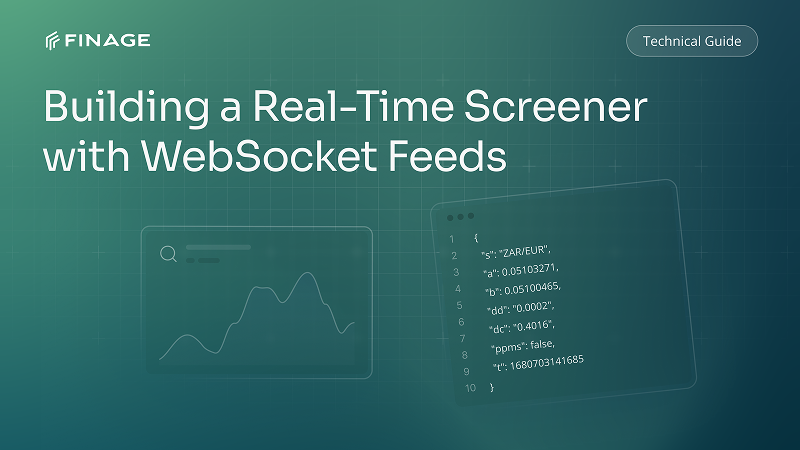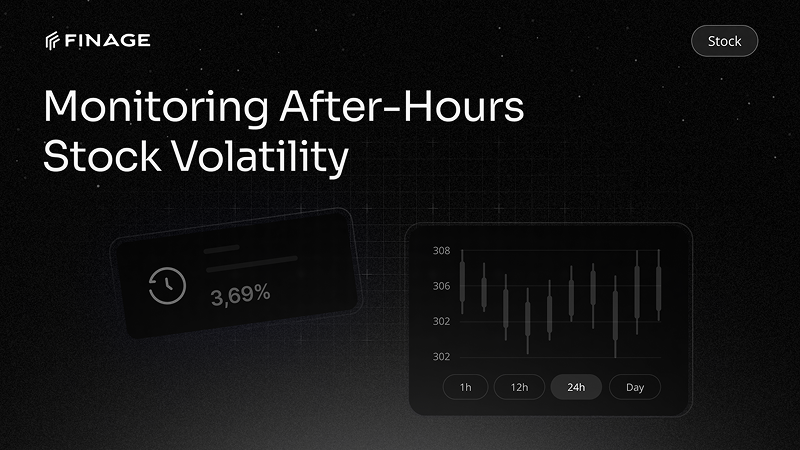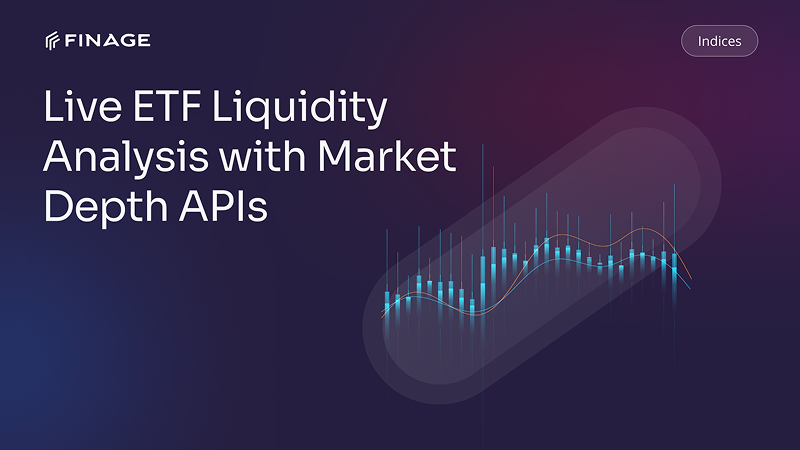How to Use Real-Time Economic Data in Forex Algorithms
8 min read • July 20, 2025

Introduction
In forex markets, speed and context go hand in hand. While price action tells you what’s happening, macroeconomic data tells you why. And in algorithmic trading, especially in foreign exchange, reacting to economic shifts in real time can turn volatility into opportunity.
From employment numbers to inflation reports, central bank rate decisions to PMI data—macroeconomic indicators can move entire currency pairs within seconds. That’s why real-time economic data has become a vital component for modern forex algorithms.
In this article, we’ll break down how to integrate real-time macro data into your forex strategies, what types of indicators matter most, and how to structure your algorithm to react with speed, context, and confidence.
Table of Contents
- What Is Real-Time Economic Data in the Context of Forex?
- Why Forex Algorithms Depend on Real-Time Economic Data
- Key Macroeconomic Indicators to Monitor in Forex Trading
- Building Reaction-Based Logic Using Real-Time Economic Data
- Integrating Real-Time Economic Data Streams with Finage
- Final Thoughts
1. What Is Real-Time Economic Data in the Context of Forex?
Real-time economic data refers to live or near-instant updates of key macroeconomic indicators that directly influence currency values. In the context of forex trading, this includes official government releases, central bank statements, and economic forecasts—delivered the moment they are published, without delay.
Unlike historical or end-of-day reports, real-time data allows forex algorithms to respond as soon as the market does. This can include:
- Employment statistics (e.g., U.S. Non-Farm Payrolls)
- Inflation metrics (e.g., CPI, PPI)
- Interest rate decisions from central banks
- GDP growth reports
- Business sentiment indexes (e.g., PMI, IFO)
- Trade balances and currency reserve updates
In the forex world, these data points are more than just headlines—they are market-moving events. Traders and algorithms alike anticipate them, price them in, and react within seconds of release. The faster your algorithm has access to real-time economic data, the more effectively it can capture momentum, adjust exposure, or avoid risk.
To use this data meaningfully, it must be:
- Delivered with low latency
- Timestamped with precision
- Categorized by importance (major vs. minor releases)
- Available in structured formats that machines can parse
With the right infrastructure, economic data becomes more than just a macro backdrop—it becomes a real-time signal your forex algorithm can act on.
2. Why Forex Algorithms Depend on Real-Time Economic Data
In the world of forex, currencies don’t just move—they react. And the catalysts for these movements are often economic releases that instantly reshape trader sentiment, risk appetite, and global capital flows. That’s why real-time economic data is a non-negotiable input for serious forex algorithms.
Here’s why it matters so much:
- Speed of Reaction = Execution Edge: Currency markets can spike or tumble within seconds of a key data release. Algorithms with direct access to real-time macroeconomic data can position ahead of slower-moving participants—or exit before volatility expands.
- Data-Driven Positioning: Forex algorithms often adjust position sizes, hedging behavior, or currency pair weighting based on real-time macro conditions. For example, an unexpectedly hawkish central bank decision may trigger a shift toward stronger currencies.
- Avoiding False Signals: Without real-time economic data, your algorithm might mistake a data-driven price movement for a technical breakout—leading to poor entries or exits. Integrating macro context reduces this risk.
- Volatility Modeling and Risk Management: Real-time macro data helps algorithms anticipate volatility spikes and apply protective logic (like widening stop-loss levels or reducing leverage) just before critical announcements.
- Arbitrage and Reaction Windows: In some cases, latency in how different brokers or exchanges price in macro events creates brief arbitrage windows. Real-time data access allows your system to act during these short-lived opportunities.
For developers, this means that economic data should be treated as an active signal—not a passive backdrop. When consumed in real time, it becomes a tactical trigger that can guide execution, refine strategies, and protect capital.
3. Key Macroeconomic Indicators to Monitor in Forex Trading
Not all economic data moves markets equally. Some releases are shrugged off, while others send shockwaves through currency pairs in a matter of seconds. For developers building forex algorithms that use real-time economic data, it’s essential to focus on the indicators that actually drive price.
Here are the most impactful macroeconomic indicators in forex trading:
- Interest Rate Decisions (Central Banks): Possibly the biggest driver of long-term currency trends. A rate hike or dovish surprise can shift sentiment and capital flows immediately.
- Non-Farm Payrolls (U.S.): A major U.S. jobs report released monthly. It's one of the most volatile data points for USD pairs, often affecting global risk sentiment.
- Consumer Price Index (CPI): A core measure of inflation. Sudden increases can signal interest rate adjustments ahead, influencing both short-term and long-term moves.
- Gross Domestic Product (GDP): Reflects economic growth. Strong GDP numbers support currency strength; weak numbers suggest economic contraction or monetary easing.
- Purchasing Managers’ Index (PMI): A forward-looking business sentiment indicator. Often gives early clues about turning points in the economy.
- Retail Sales: A measure of consumer demand and spending strength—especially influential in economies like the U.S. and UK.
- Unemployment Rate: A core labor market indicator that complements more volatile figures like NFP. Consistent changes in employment impact rate outlook and economic sentiment.
- Trade Balance: A surplus typically supports currency strength, while a deficit may apply pressure—especially in export-driven economies.
- Central Bank Minutes & Speeches: Not traditional “data,” but real-time parsing of tone and language in central bank communication can trigger sharp intraday moves.
For each of these releases, the market often reacts not only to the headline number but also to whether it beats, meets, or misses expectations. That’s why real-time economic data must also include context—like forecast comparisons and revision alerts—so your algorithm can respond appropriately.
4. Building Reaction-Based Logic Using Real-Time Economic Data
Having access to real-time economic data is powerful—but without the right reaction logic, that data is just noise. To make your forex algorithm truly responsive, you need to structure rules that interpret incoming macro data and translate it into trading decisions within milliseconds.
Here’s how to build a basic framework:
Step 1: Define Which Events Matter
Start by selecting the events that will trigger action. This might include:
- Central bank rate decisions
- CPI or inflation releases
- Non-Farm Payrolls
- PMI or GDP surprises
Not every data point requires a response—focus on high-impact, regularly scheduled events that align with your trading hours and target currency pairs.
Step 2: Compare Actual vs Forecast
Most economic data is released alongside a market consensus forecast. Your algorithm should instantly compare:
- Actual > Forecast: Bullish reaction expected (e.g., stronger currency)
- Actual < Forecast: Bearish reaction expected
- In-line: Potential for limited market impact
Build logic that reacts to both direction and magnitude of the surprise. For example:
“If actual CPI > forecast by more than 0.2%, go long on currency.”
Step 3: Apply Conditional Positioning
Based on the outcome, define a response structure:
- Open new positions
- Adjust stop-loss or take-profit levels
- Close or reduce existing exposure
- Switch trading modes (e.g., from passive to active)
Include volatility filters to avoid overreacting to minor surprises or unexpected outliers.
Step 4: Manage Latency and Order Routing
Timing is everything. Use low-latency infrastructure to:
- React before price absorbs the news
- Route orders efficiently
- Prevent slippage during fast price movement
This is where real-time economic data becomes truly valuable—it allows you to act on the signal while others are still interpreting it.
Step 5: Monitor and Backtest
Use historical macroeconomic data with timestamped price action to test your reaction logic before deploying it live. Adjust for false positives and optimize based on event type, currency pair, and time of day.
With this kind of reactive structure, your algorithm stops being just technically driven and becomes context-aware—responding not just to what the market is doing, but why.
5. Integrating Real-Time Economic Data Streams with Finage
Turning real-time economic events into actionable insights requires more than just speed—it requires structure, reliability, and clean integration. That’s exactly what Finage provides for developers building forex algorithms that depend on real-time economic data.
Here’s how Finage supports macro-driven algorithmic trading:
- Live Economic Calendar Stream: Finage offers a real-time feed of macroeconomic events, including release times, actual/forecast values, and market importance levels—ready for use in event-driven logic.
- Structured, Machine-Readable Data: Data is delivered in standardized formats with consistent field names, making it easy to plug directly into trading logic, without excessive preprocessing.
- Instant Access to Key Indicators: Get immediate delivery of central bank decisions, inflation reports, labor market stats, and more—sourced from trusted global institutions.
- Event-Level Metadata: Alongside each data point, Finage includes metadata such as:
- Country
- Currency impacted
- Volatility rating
- Frequency (monthly, quarterly, etc.)
This enables filtering and prioritization within your algorithm.
- Time-Synchronized Delivery: Economic events are timestamped and delivered in real time—allowing your logic to run comparisons between actual and forecast values within milliseconds.
- Built for Developers: With clear documentation, consistent APIs, and responsive support, Finage reduces the overhead of working with macroeconomic feeds so you can focus on strategy, not infrastructure.
By integrating Finage’s real-time economic data, your forex algorithm gains the power to react faster, trade smarter, and align decisions with what’s actually shaping the market.
\
Final Thoughts
In algorithmic forex trading, speed is essential—but speed without context is just noise. That’s why real-time economic data has become one of the most powerful tools for modern trading systems. It turns macro events into signals, allows for smarter risk management, and helps algorithms understand not just what’s happening, but why.
From employment data to rate decisions, reacting to economic shifts in real time can elevate your strategy from reactive to intelligent. But only if your infrastructure can keep up.
That’s where Finage makes the difference.
With structured, real-time economic data streams, global macro coverage, and developer-first API design, Finage enables you to integrate economic insight directly into your forex algorithms. Whether you’re running event-driven models or hybrid technical-macro systems, Finage helps you execute with precision, speed, and clarity.
Explore the Finage API documentation and start building forex systems that move with the market—and the economy driving it.
Claim Your Free API Key Today
Access stock, forex and crypto market data with a free API key—no credit card required.

Stay Informed, Stay Ahead
Finage Blog: Data-Driven Insights & Ideas
Discover company news, announcements, updates, guides and more


